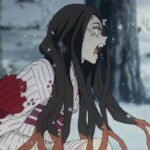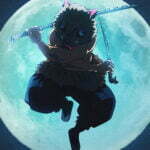Welcome to Anime Favor! Your destination for all things Anime! I make fun Anime related content, please sit back and enjoy!
Kimono Patterns in Demon Slayer: Discover Hidden Meanings

Demon Slayer takes place in the Taishō Period in Japan. One day, a teen named Tanjiro Kamado returned home and found that his family was killed, only his sister Nezuko survived, but his sister looks different from the usual. In order to find a way to save his sister, Tanjiro set out on an adventure to eliminate the demons.
The Taishō Period is between 1912 and 1926 in Japan, which is the shortest year in Japanese modern history. During this period, major events such as the Taishō Democracy, World War I, and the Great Kanto Earthquake occurred.
In this period, Western fashion had begun to influence people’s fashion choices. Some people continued to wear traditional clothes while others began to switch. The wears in Demon Slayer can be considered a mix of traditional Japanese clothes and western fashion in those days.
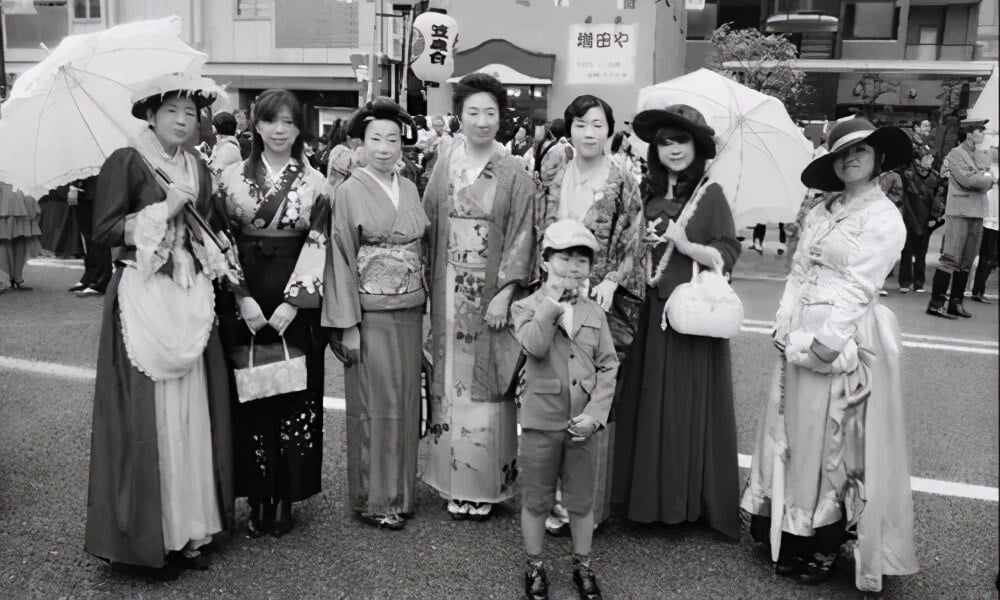
Most of the characters in Demon Slayer wear haori or kimono, each with their own distinct pattern.
The kimono has a long history, which was born in the Heian period (794-1192) in Japan. These floral patterns on the kimono were inspired by the plants, animals, seasons, utensils and lines around the people living, ranging from simple and generous geometric patterns to complex and gorgeous flowers and animals, concretely presenting the slender aesthetics unique to Japanese culture. The designs and patterns used in their outfit have been used in japan for many centuries and remain popular and important to this day.
What you may not have realized is that there are specific names and meanings behind the patterns that some main characters are wearing! These patterns are also associated with each character’s fate. Let’s take a look at these hidden meanings behind their outfits!
Tanjiro’s Ichimatsu Checkered Pattern
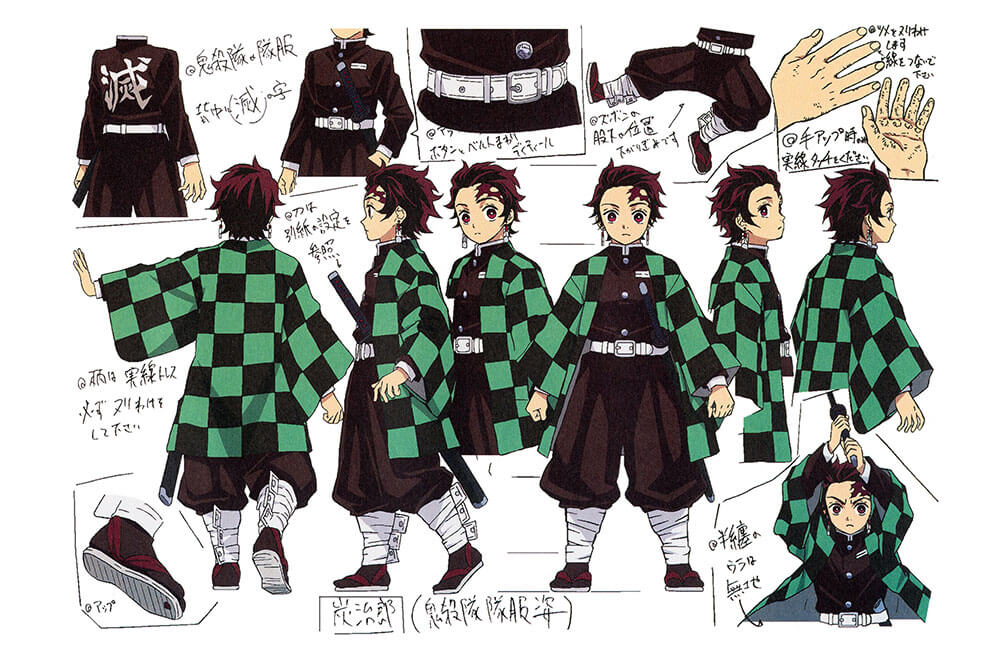
Tanjiro Kamado wears a green and black checkered haori. This checkered pattern is a combination of square or rectangular shapes in alternating colors, similar to a Japanese chessboard.
The checkered pattern was used on the clothes of the emperor and the imperial family during the Heian period, it is one of the oldest kimono patterns in Japan.
The checkered pattern became known as the “ichimatsu pattern” after being popularized by kabuki actor Sanogawa Ichimatsu (1722–1762) who wore striking white and blue checked trousers. This term continues to be used today.
Tanjiro wears this pattern, as do his parents. His sister Nezuko wears a belt with the same pattern. Ichimatsu pattern could be said to Kamado’s family pattern.
Ichimatsu symbolizes longevity thriving in business, and both personal and familial prosperity. In Demon Slayer Manga, Tanjiro keeps taking care of his sister Nezuko, and regards her as the most important to him. He will never forget his family, which is his driving motivation. It makes sense that Tanjiro wears this pattern.
The Tokyo 2020 Olympic and Paralympic Games also take inspiration from the ichimatsu pattern in their logos. Different countries, cultures, and ideologies are represented with three quadrilateral shapes. Combined, these shapes convey a message of “unity in diversity” and transform into a composite ichimatsu pattern design.
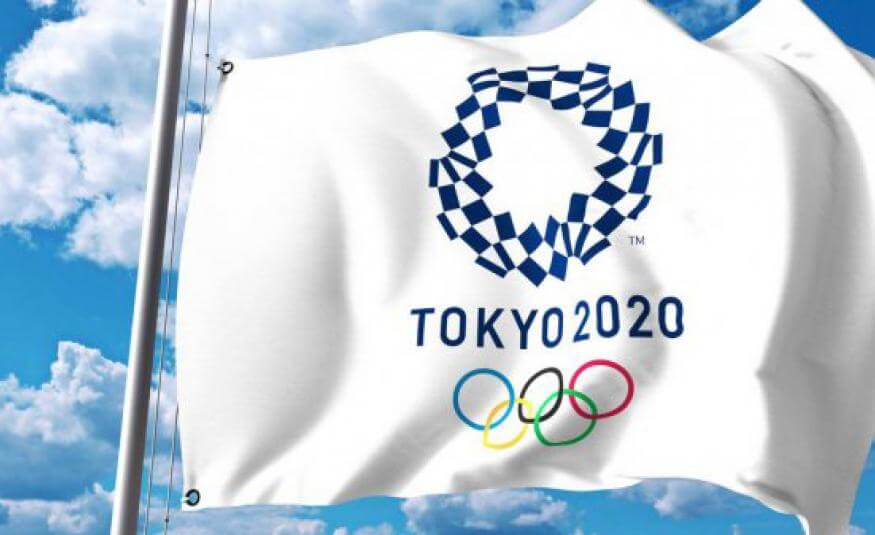
Nezuko’s Asanoha Hemp Leaf Pattern

Tanjiro’s sister, Nezuko, wears a kimono with a pink hemp leaf pattern (called “Asanoha” in Japanese) and an ichimatsu-patterned sash.
It was inspired by the shape of overlapping hemp leaves. This pattern can often be seen in Buddhist art and statues. It was also popular in kabuki stage costumes and woodblock prints during the Edo Period (1603-1868).
The hemp leaf pattern is one of the most popular traditional patterns for kimonos. Because hemp leaves grow quickly and are durable, they represent growth and health for children.
Considering Nezuko’s fate turned into a demon, she needs all the help she can get to hopefully grow up into a normal woman someday, and overcome her curse.
Babies and children were often given clothing sewn from asanoha textiles, since hemp leaves were known to be durable and fast-growing. In the Edo period, the mortality rate of small children was high. After the birth of a child, the mother would dress the girl in a red hemp-leaf patterned kimono and the boy in a yellow or light onion-colored hemp-leaf patterned kimono. It was believed that wearing clothing with hemp leaf patterns would ward off misfortune and help the child grow strong and healthy.
Zenitsu’s Urokomon Scale Pattern
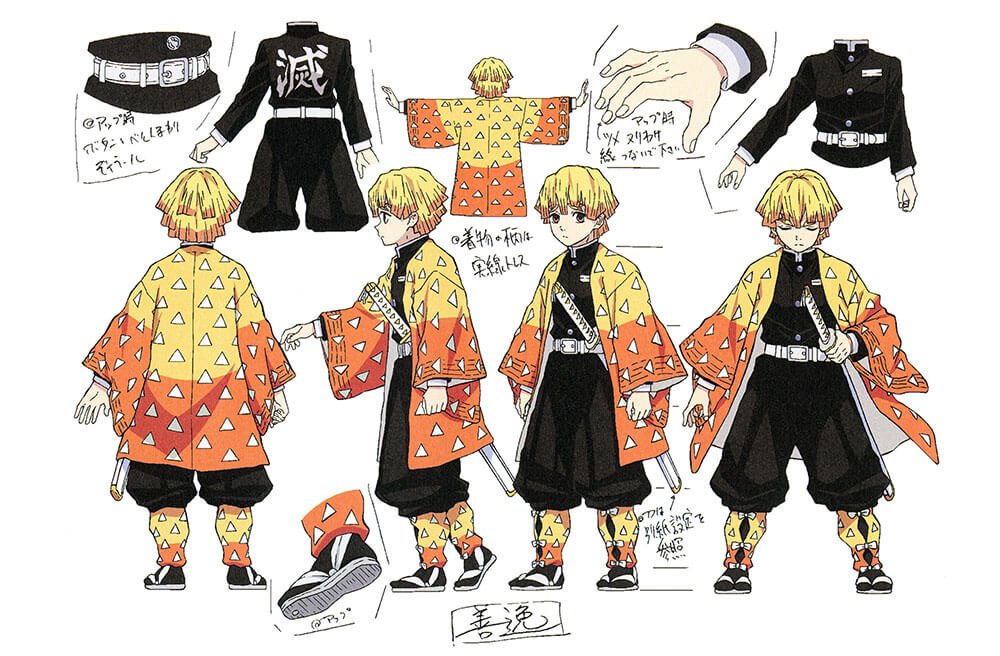
Zenitsu Agatsuma, another popular character, wears a haori with yellow and white overlapping triangles. The pattern is called Urokomon in Japanese. The pattern is inspired by nature, because the triangles resemble the scales found on snakes, fish, and dragons.
Urokomon is meant to protect the wearer from evil and curses. Scale patterns were often worn by samurai believing it would keep them from harm. The Urokomon pattern is also associated with prayers for safety at sea.
Historically, earthenware with this continuous triangle pattern was used as burial goods that would protect the deceased in the afterlife. It was believed that the pattern had the power to protect against evil and curses, which led to its use on armor and weapons.
During the Muromachi Period (1336-1573), the scale pattern could also be seen in Noh theater, on the costumes of actors playing snakes or vengeful female demons. In the Edo Period (1603-1868), the pattern was associated with molting snakes and butterflies and came to symbolize rebirth and escaping from misfortune.
Considering how terrified Zenitsu is of demons, it tracks logically that he would choose to wear this pattern. Plus, the yellow colour likely is significant to his lightning powers!
Giyu’s Solid Red And Bishamon-kikko Pattern

Giyu wears a haori that split down the middle into two different patterns. The right one a solid red, and the left one geometrically patterned with squares of green, orange, and yellow. The geometrically pattern is called “Tortoise-kikko”.
The “Bishamon-kikko” pattern was introduced to Japan from China during the Heian period. The turtle symbolizes longevity and good fortune, so at first, only noblemen’s clothing could use this pattern.
The Bishamon-kikko Pattern of Guyu’s haori is from Sabito. Sabito’s haori was his father’s, who was killed by a demon. Giyu befriended Sabito when they trained under Sakonji Urokodaki. Sabito was an extremely talented swordsman. During the Final Selection, he succeeded in killing almost every single demon on that mountain. Unfortunately, he came across the Hand Demon who bore a grudge against the students of Urokodaki, and died saving Giyu.

The other half of Giyu’s haori is from his sister tsutako. One day Giyu was being chased by a demon who almost succeeded in killing him. However, his sister intervened just in time and sacrificed her life in order to save her younger brother from being consumed. She died the night before her wedding. Tsutako wore a solid red kimono.
In order to honor these brave souls, Giyu’s Haori is designed in a manner that contains both patterns occupying either halves of the clothing.
Shinobu Kocho’s Butterfly Pattern
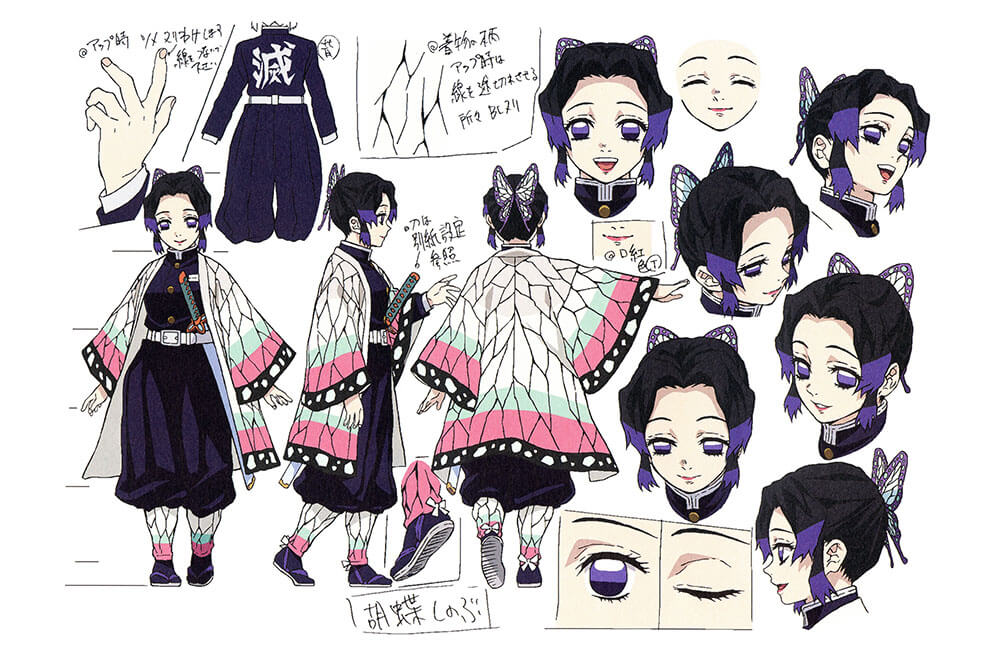
The beautiful Insect Hashira, Shinobu Kocho, wears a kimono with butterfly wings that is not a traditional Japanese design, but a pattern created by the Demon Slayer manga. When she fights, his Haori unfolds with the wind like a beautiful butterfly. Kocho used to wear a pure white haori, the now haori with butterfly wings is a relic of her sister.
The butterfly is a magical creature that constantly changes its appearance from an egg, a caterpillar, a chrysalis, to a beautiful butterfly fluttering in the air, and is therefore considered a symbol of reincarnation and immortality.
Some samurai families in Japan used butterflies as their family crest.
Other Amazing Patterns You May Like
Yagasuri Arrow Pattern
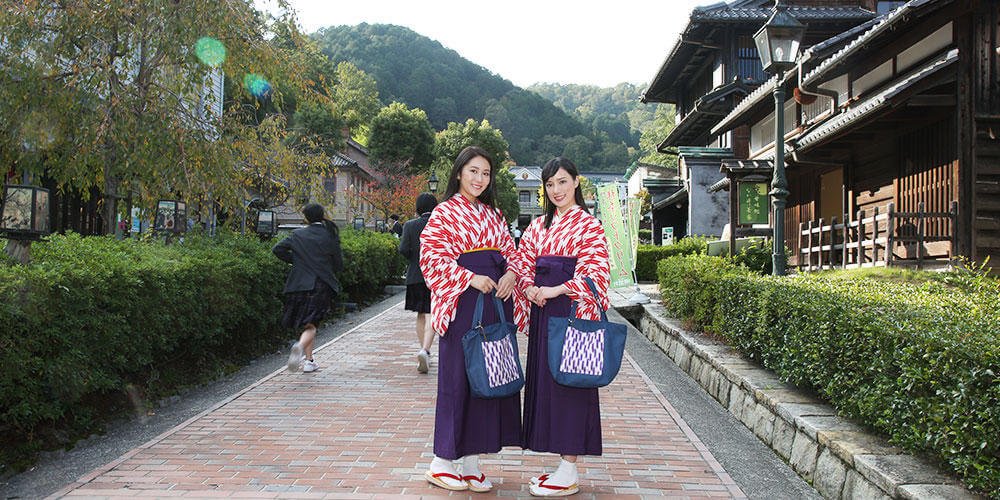
Yagasuri is a traditional pattern that depicts arrow fletching. This pattern is often used on wedding kimonos, in hopes that the bride will fly from her parents’ home successfully. This comes from a Japanese saying that, once an arrow is shot, it never returns.
Yagasuri clothing has been popular with young women since the Meiji Period (1868-1912). Today, it’s often seen in kimonos worn by young women at their university graduations!
Seigaiha Pattern
Seigaiha is a pattern made from overlapping semicircles creating a wave-like, geometric design. It is one of the most common traditional Japanese patterns; the endless waves symbolize everlasting happiness and peace.
Between the Hokusai Art Museum in Tokyo and the Edo-Tokyo Museum, there is a building called “Ryogoku Yuya Edoyu”. The 20-meter-high outer wall is based on the Seigaiha pattern, and the design is like a curtain fluttering, forming a soft curve.
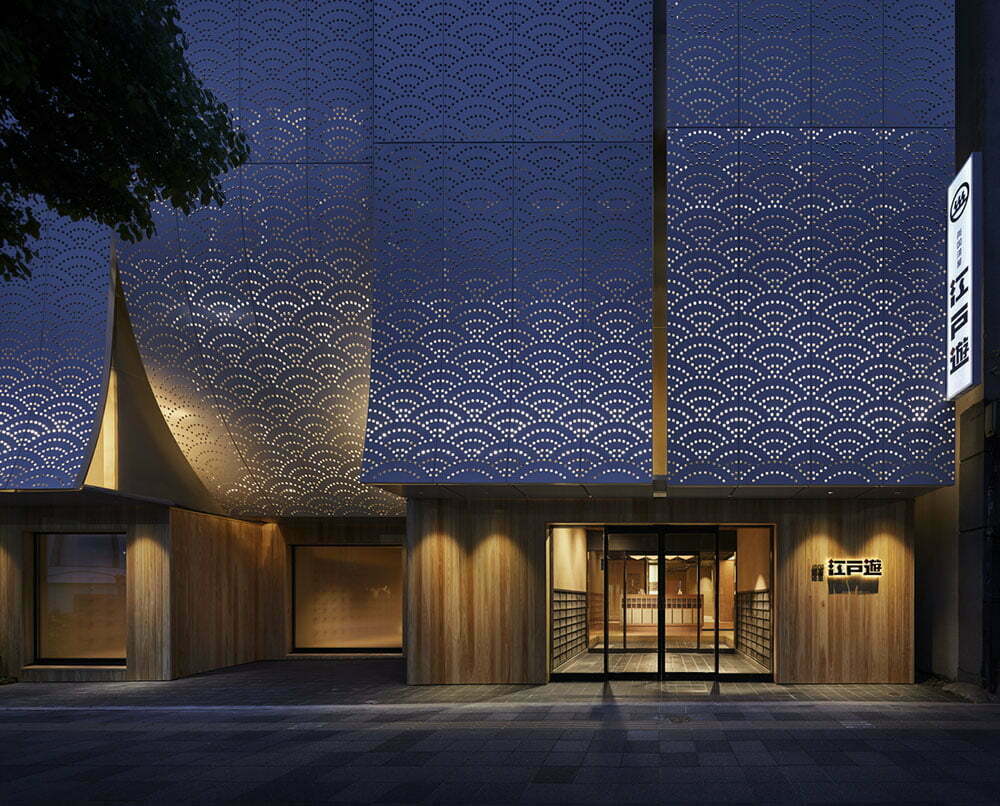
Explore the Deeper Side of Anime
Were you surprised by the meanings behind these traditional Japanese patterns? We can all enjoy Japan’s traditional culture thanks to “Demon Slayer.”
One of the most interesting things about the patterns seen in Demon Slayer is that they are still alive and well in Japan today, and still used in traditional clothing. Of course, they have become even more popular with Demon Slayer’s success, but even before the anime became a bit they were still used in haori, kimono, and yukata, as well as smaller things like handkerchiefs, bags, and masks. Those who are interested in history and traditional clothing know the meanings that have been around for decades now – Demon Slayer has just brought them back into the public eye.
Take a walk down a shopping street in cultural cities like Kyoto or Kanazawa, or areas of Tokyo like Asakusa, and you will see the patterns from Demon Slayer everywhere. You can also find these same patterns in many other colors, too, and even non-anime fans continue to enjoy them today.


